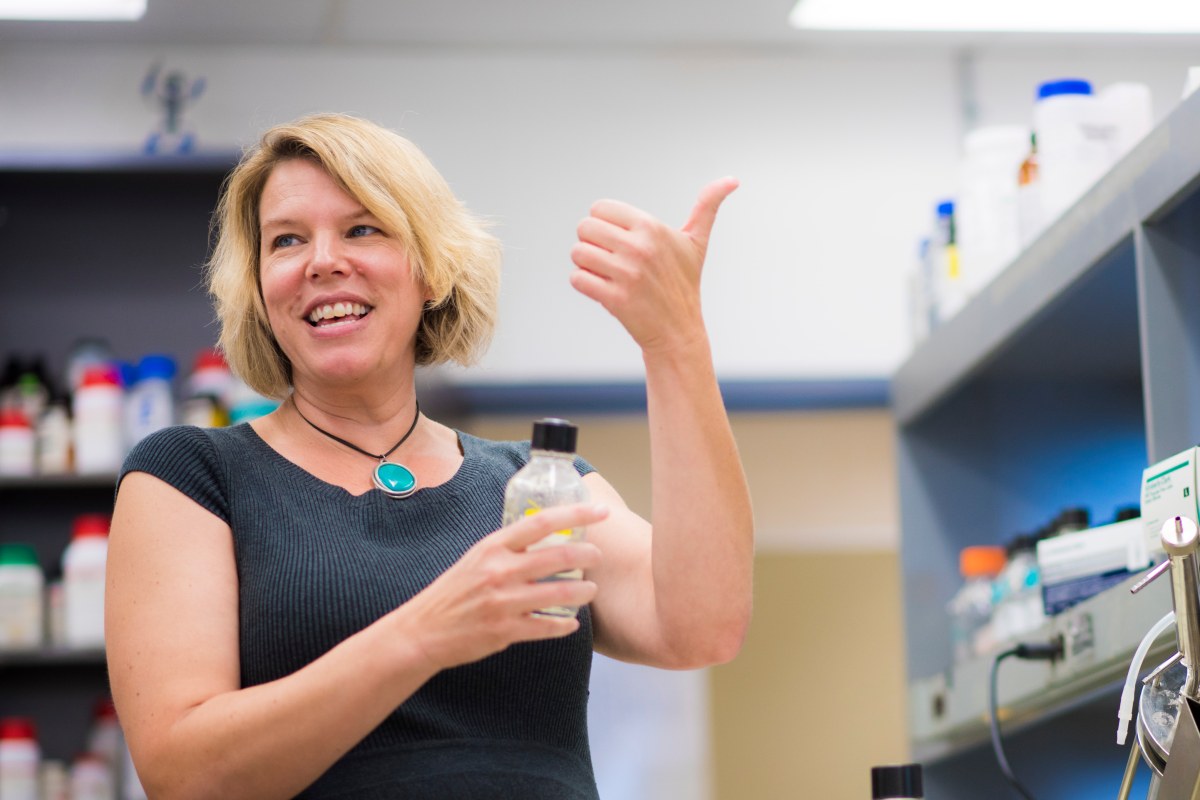
Professor Lisa Stein, pictured in her lab on the University of Alberta campus. Photo credit: John Ulan
“I strive to make the online versions of my courses as engaging, interesting, and useful as my in-person classes,” explained Lisa Stein when asked about her plans for teaching at a distance this September. “It is possible to make online learning as fun and engaging as in person! That is the goal.”
The global COVID-19 pandemic has required a mass migration to the digital world, and post-secondary learning is no exception. As the University of Alberta prepares to continue delivering course content primarily remotely in the Fall 2020, the Faculty of Science has connected with some of our top instructors and scientists to illustrate what the university experience will look like in the Fall 2020 term. While delivery may look different, what remains the same is our strong commitment to an engaging and quality education and experience for our students.
Stein, professor in the Department of Biological Sciences, is an expert in microbiology. In September 2020, she will be teaching two undergraduate microbiology courses at a distance: Microbial Physiology (MICRB 311) and Applied Microbiology and Biotechnology (MICRB 315).
Hear more about Stein’s plans for Fall 2020.
How are you planning to adapt your courses for remote delivery?
Both MICRB 311 and MICRB 315 take advantage of blended learning approaches. The knowledge transfer part is accomplished with brief mini-lectures—about 15 to 20 minutes in length. Following each mini-lecture, there is an interactive component that could be a quiz, a short online research project such as a literature search for an answer to a question, or a thought question. After each major section is completed, there is an opportunity for a group assignment that is the basis for discussion during the synchronous class periods. The group assignment could be anything from break-out discussions to debates to polls, or other creative opportunities to apply the knowledge students have learned during the asynchronous learning periods.
Only one synchronous class is held per week, which—depending on enrolment—will be held with half the class on one day and half on the other to account for difficulties with synchronous time commitments that happen with online learning environments. When we meet in person, each student has gone through the mini-lectures and interactive components and comes ready for the group work.
Both courses also have a semester-long project. MICRB 311 involves finding a high-impact research article on microbial physiology and dissecting the work into a blog-style essay and a video presentation for the class. MICRB 315 involves a team web-building project where the team creates a microbial bioindustrial company to sell a product, and they compete with another team for “funding” by the rest of the class, not unlike Shark Tank or Dragon’s Den.
What are your lessons learned from the pivot in the Winter term, and how will the fall be different for you given the longer lead time for planning?
I will have all of the mini-lectures recorded before the term begins, which will give me more time to be creative for the interactive assignments and group work.
What are you most looking forward to for the fall?
I’m looking forward to the synchronous classes where I can assess how well the asynchronous learning is going for everyone, I’ll have a chance to meet my students, and I can interact with the students and learn how to modify assignments going forward to make them more engaging and useful.
Any other messages of encouragement for new and returning students?
I strive to make the online versions of my courses as engaging, interesting, and useful as my in-person versions. Let’s face it, the knowledge transfer part of a course is usually the most boring, and I tend to make up for this by dynamic lecturing. In moving to online learning, it’s important to keep the knowledge transfer component concise and focus more on engagement and application of knowledge. It is possible to make online learning as fun and engaging as in person! That is the goal.
Learn more about how the University of Alberta is preparing to engage students for September and beyond on our Fall 2020 hub.
Students, faculty, and staff can stay up-to-date with the latest information on COVID-19 for the campus community online.